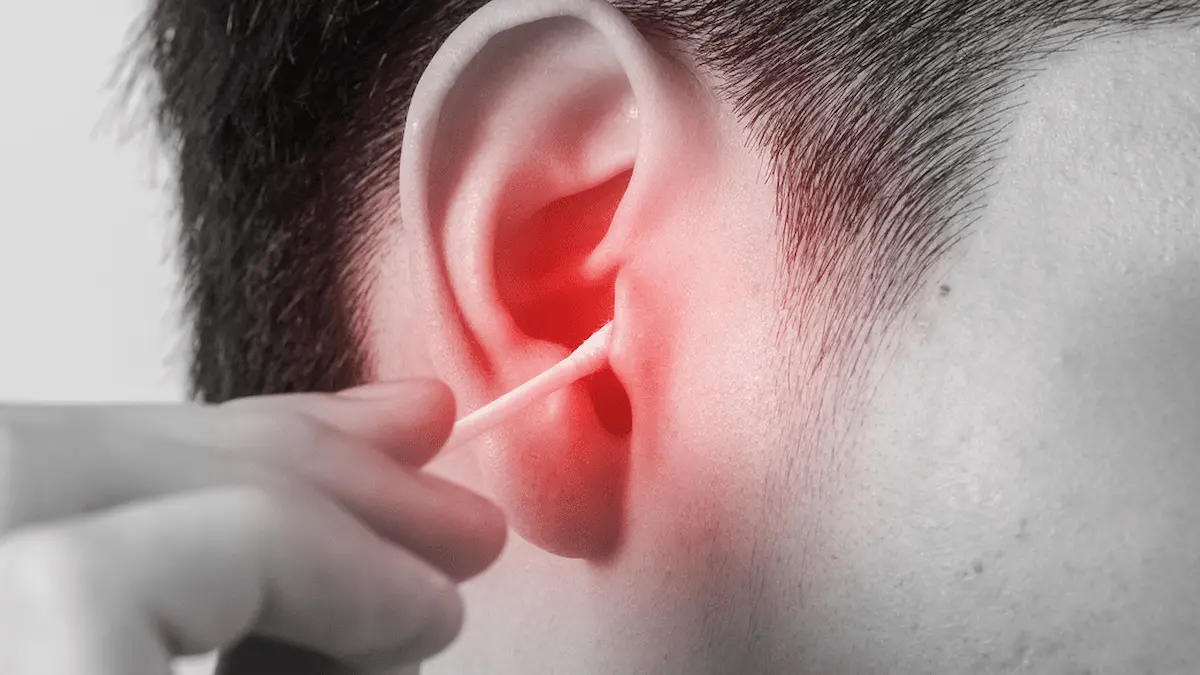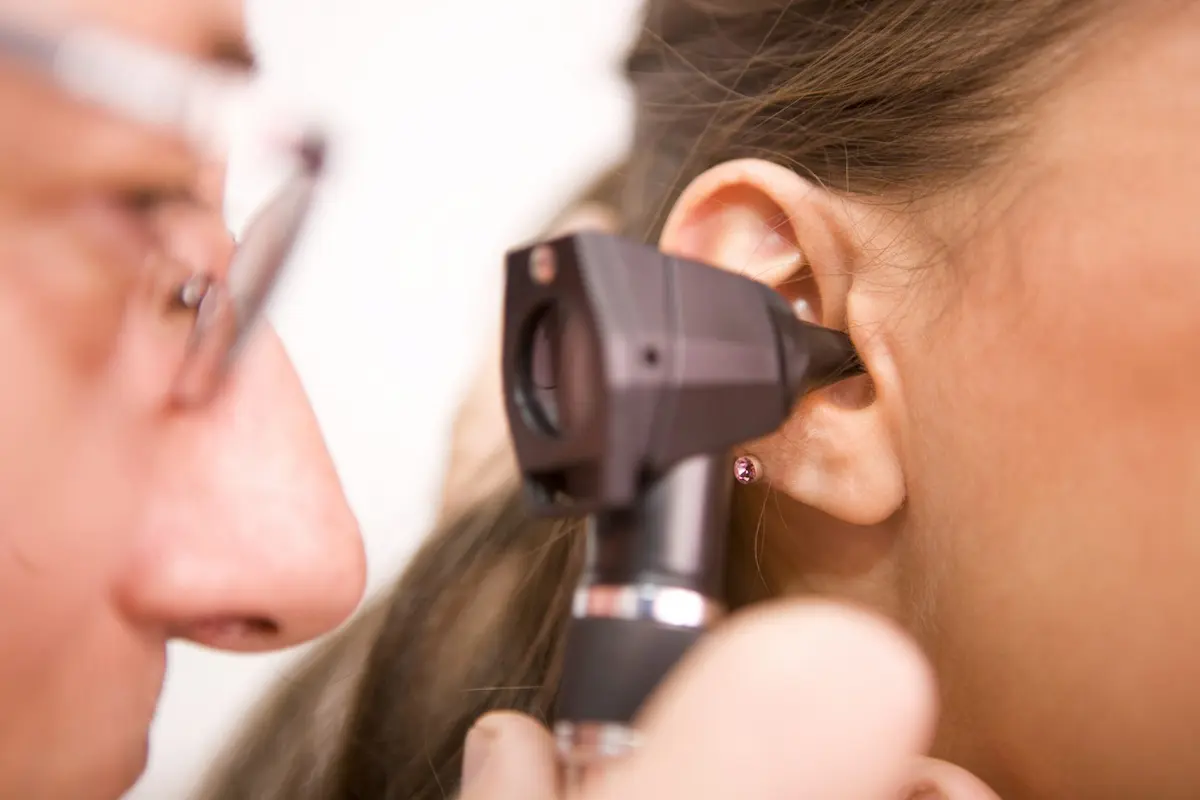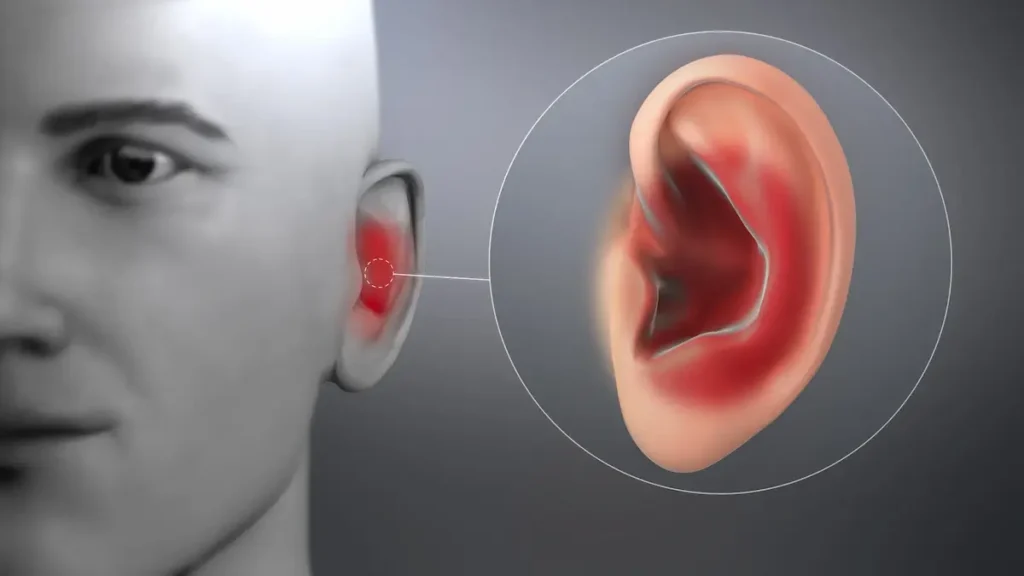Ear infections and their treatment are health problems that many people seek to identify and solve, especially among children. This infection is characterized by ear pain, pressure and often reduced hearing ability, and can be uncomfortable and annoying. While most ear infections fade on their own, some may need medical intervention.

Ear is a complex organ divided into three main sections and infection can occur in any of these areas, but the most common type is middle ear infection. This occurs when the liquid builds up behind the eardrum and becomes infected. Factors such as colds, allergies and glandular ear enlargement can contribute to the development of middle ear infections.
Ear infections and their treatment
Ear infections, often characterized by ear pain, pressure and sometimes fever, are common, especially in children, and this infection occurs when the liquid accumulates in the middle ear and becomes infected.
It should be noted that most ear infections fade on their own, severe cases may require medical attention. Treatment typically includes over-the-counter painkillers to deal with discomfort.
In cases of bacterial infection antibiotics can be prescribed, and for chronic or recurrent ear infections, actions such as placing an ear tube can be considered: in some cases, preventing ear infections through practices such as hand washing and avoiding exposure to cigarette smoke can also be useful.
Types of Ear Infections
There are many types of ear infections to which human beings can be exposed, the most important of which are:

External ear infection (external otitis)
This occurs on the outside of the ear, often referred to as the swimmer’s ear due to its spread among swimmers. It is caused by bacteria or fungi entering the ear canal.
Middle ear infection (ear inflammation)
This is the most common type of otitis, especially in children. It happens in the middle ear, space behind the ear drum. It is often caused by a cold or sensitivity that prevents the Eustachian tube, resulting in fluid accumulation.
Other types
- Internal ear infection (labyrinthitis): This affects the inner ear and can cause dizziness, dizziness and hearing loss.
- Chronic otitis: persistent middle ear infection
Symptoms of Ear Infections
Symptoms of otitis can vary depending on a person’s age and type of otitis, and common symptoms of ear infections include:
- The presence of pain in the ear is often the most obvious symptom, and can be severe.
- Fever, especially in children.
- Trouble sleeping due to ear pain or discomfort.
- Irritation, which is common in infants and young children.
- Loss of balance showing the condition of the presence of internal ear infections.
- The occurrence of discharge from the ear which can be a sign of a more serious infection.
- Low hearing aids can also occur temporary impairment in hearing aids.
- The feel of pulling or tightening the ear
Best antibiotic for ear infection in adults
If there are some problems that contribute to the presence of an ear infection, you should consult a doctor immediately. Antibiotics target bacterial infection, over-the-counter painkillers such as ibuprofen or acetaminophen can help control ear pain and discomfort The following are common antibiotics for ear infections to which the doctor may refer:
- Amoxicillin: An antibiotic is widely used, but resistance is increasing.
- Amoxixillin-clavulanate (Augmentin): It is often used when amoxicillin alone is not effective.
- Azithromycin (Zithromax): A macrolide antibiotic can be effective.
- Ciprofloxacin: an antibiotic to fluoroquinolone, often used for severe infection.
Read more: Preventing ear diseases
Causes of Ear Infections
Ear infections, especially middle ear infections, are often caused by the blockage of the Eustachian tube, the channel that connects the middle ear to the back of the throat, as this blockage can prevent proper liquids drainage and create an environment conducive to bacterial or viral growth. Common offenders include colds, allergies and enlarged glands.

These conditions can also lead to inflammation and obstruction of the Eustachian tube. In addition, exposure to passive smoking, environmental allergens and weakened immune systems can increase the risk of ear infections.
In some cases, bacteria or viruses may directly infect the middle ear without previous blockages. External ear infections, often referred to as swimmer’s ear, are usually caused by water trapped in the ear canal, creating a humid environment for bacteria or fungi to thrive. Poor hygiene, excessive cleaning of the ear, and exposure to contaminated water can also contribute to external ear infections.
Treatment for Ear Infections
Can work on Ear infections and their treatment By identifying the factors that lead to infection and the area in which it exists
External ear infection
In the event of an infection in the outer ear, over-the-counter ear droplets can be used, as containing hydrocortisone and antibiotics can help reduce inflammation and control infection, while keeping the ear dry to prevent further irritation.
In addition, over-the-counter painkillers such as ibuprofen or acetaminophen can help manage discomfort.
Middle ear infection
In many cases, middle ear infections fade on their own within a few days: you can use over-the-counter painkillers that help manage pain and fever.
If the infection is severe or does not improve, the doctor may prescribe antibiotics
Internal ear infection
Anti-nausea drugs, corticosteroids and diuretics can be prescribed to manage symptoms, and may resort to physiotherapy that helps improve balance and coordination.
Prevention of Ear Infections
Ear infections and their treatment are problems that have spread very recently so that they can prevent infection or seek appropriate treatment. Ear infections must be understood as a combination of lifestyle changes and health practices. Breastfeeding children for at least six months can significantly reduce the risk of ear infections.
For older children and adults, good hygiene practice, such as frequent hand washing, can help prevent the spread of germs. It is necessary to avoid exposure to passive smoking, as it irritates the respiratory tract and increases the likelihood of ear infections.
Managing allergies and treating the common cold can immediately help prevent the blockage of the Eustachian tube. For those exposed to ear infections that can be solved by taking any supplements such as VidaCalm and SonoFit, swimming ear plugs can be used to protect the ears from exposure to water.
In addition, regular dental examinations are important, as dental infections can sometimes contribute to ear problems. Although it is not always possible to prevent ear infections completely, these procedures can help reduce the risk and severity of these uncomfortable conditions.
Conclusion
Ear infections and their treatment are a common health concern, particularly among children. While they can be uncomfortable and disruptive, most ear infections resolve on their own without the need for antibiotics. However, it’s essential to consult a healthcare professional for proper diagnosis and treatment, especially if symptoms persist or worsen.

